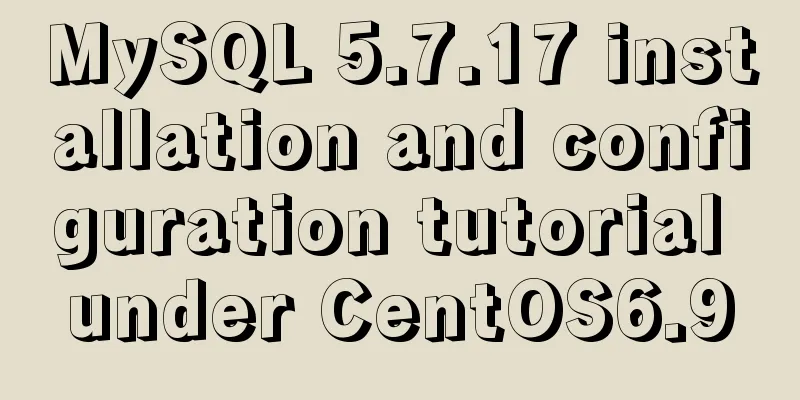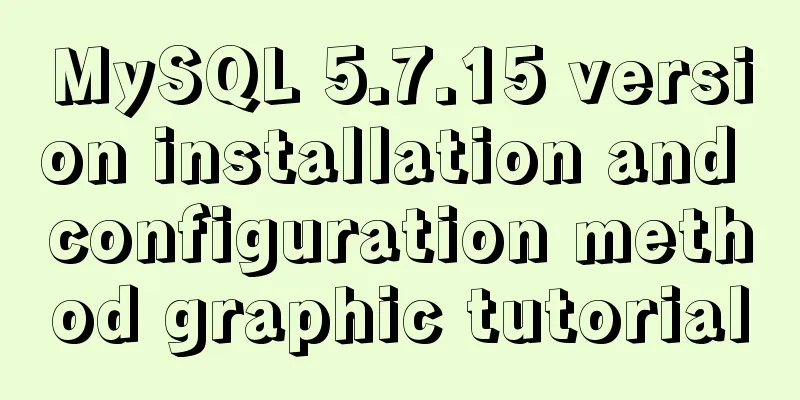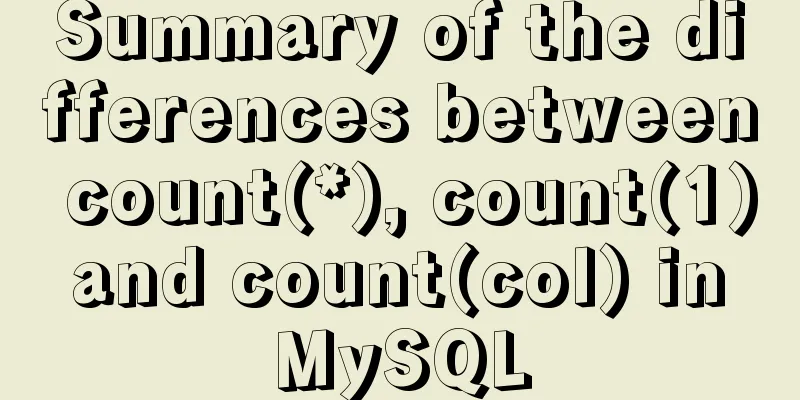MySQL 5.7.17 installation and configuration tutorial under CentOS6.9

|
CentOS6.9 installs Mysql5.7 for your reference, the details are as follows 1. Upload the installation package
2. Create users and mysql directories 1. Create a mysql group Enter the command: groupadd mysql 2. Create a mysql user and put it in the mysql group Enter the command: useradd -r -g mysql mysql 3. Set a password for the mysql user Enter the command: passwd mysql
3. Unzip Mysql 1. Copy the tarball to the /usr/local/mysql directory
2. Decompression tar -zxvf mysql.tar
3. Rename the unzipped file to mysql
4. Configure related startup files 1. Copy my_default.cnf to /etc/my.cnf (automatically read when mysql starts) Back up my.cnf
Copy my.cnf
2. Solve the garbled problem Enter the command: vi /etc/my.cnf Change: [mysql] default-character-set=utf8 [mysqld] default-storage-engine=INNODB character_set_server=utf8
3. Copy mysql.server to /etc/init.d/
4. Modify the /etc/init.d/mysql parameters to give two directory locations Enter the command: vim /etc/init.d/mysql Change: basedir=/usr/local/mysql datadir=/usr/local/mysql/data
5. Change the owner of the directory /usr/local/mysql Enter the command: chown -R mysql:mysql /usr/local/mysql/
5. Initialize the database Old command ./mysql_install_db --user=mysql --basedir=/usr/local/mysql/ --datadir=/usr/local/mysql/data/ New command: ./mysqld --initialize --user=mysql --basedir=/usr/local/mysql --datadir=/usr/local/mysql/data
6. Start the database Enter the command: ./mysqld_safe --user=mysql & & symbol: throw the current process to the background
7. Change Password View the password automatically generated by initialization: cat /root/.mysql_secret Enter mysql: bin/mysql -uroot -p (paste the password you just copied) Reset root password after logging in mysql> SET PASSWORD FOR 'root'@localhost = PASSWORD('123456'); 8. Connecting to the virtual machine database on this machine Check whether only root localhost permissions are authorized. If so, remote access cannot connect mysql> select Host, User, Password from mysql.user; Grant % permissions to root mysql> update user set host = '%' where host = 'localhost'; mysql> flush privileges; Finish! IX. Problem 1. ./mysqld_safe: line 586: /var/lib/mysql/mysqld_safe.pid: No such file or directory
Solution: (1) Because there is no error log during the investigation, we temporarily use the method of supplementing the directory mkdir -p /var/lib/mysql chown mysql:mysql /var/lib/mysql
(2) After adding the directory, the error message Can't open and lock privilege tables: Table 'mysql.user' doesn't exist appears Error in datadir path in My.ini Change path
2.mysqld_safe mysqld from pid file /usr/local/mysql/localhost.pid ended
Query log: Found: The error means mysqld does not have the access rights to the directory.
Change permissions: chmod -R 777
A new problem occurred: Can't open the mysql.plugin table. Please run mysql_upgrade to create it.
Solution: Reinitialize using the old command 3. Starting MySQL..... ERROR! The server quit without updating PID file (/usr/local/mysql/centos6.9.wzy.com.pid).
Problem: character_set_server=utf8 is written incorrectly in my.ini When I fixed the problem before, my.ini was changed incorrectly datadir=/usr/local/mysql/data The above is the full content of this article. I hope it will be helpful for everyone’s study. I also hope that everyone will support 123WORDPRESS.COM. You may also be interested in:
|
<<: jQuery plugin to implement stacked menu
>>: Summary of methods to check whether the port is open in Linux
Recommend
20 JS abbreviation skills to improve work efficiency
Table of contents When declaring multiple variabl...
MySQL deep paging (how to quickly paginate tens of millions of data)
Table of contents Preface Case optimization summa...
HTML Basics: The basic structure of HTML
The basic structure of HTML hypertext documents is...
Detailed explanation of how to pass values between react hooks components (using ts)
Table of contents From father to son From son to ...
JavaScript Array Methods - Systematic Summary and Detailed Explanation
Table of contents Common array methods Adding and...
JS realizes the automatic playback effect of pictures
This article shares the specific code of JS to ac...
Using js to implement a number guessing game
Last week, the teacher gave me a small homework, ...
Nginx reverse proxy configuration to remove prefix case tutorial
When using nginx as a reverse proxy, you can simp...
11 Examples of Advanced Usage of Input Elements in Web Forms
1. Cancel the dotted box when the button is press...
Nodejs Exploration: In-depth understanding of the principle of single-threaded high concurrency
Table of contents Preface Architecture at a Glanc...
A brief discussion on the semantics of HTML and some simple optimizations
1. What is semanticization? Explanation of Bing D...
Example of using @media responsive CSS to adapt to various screens
Definition and Use Using @media queries, you can ...
Detailed explanation of JavaScript object-oriented practice: encapsulation and dragging objects
Table of contents Overview 1. How to animate a DO...
How to use iostat to view Linux hard disk IO performance
TOP Observation: The percentage of CPU time occup...
Practice of implementing custom search bar and clearing search events in avue
Table of contents 1. Customize the search bar con...































